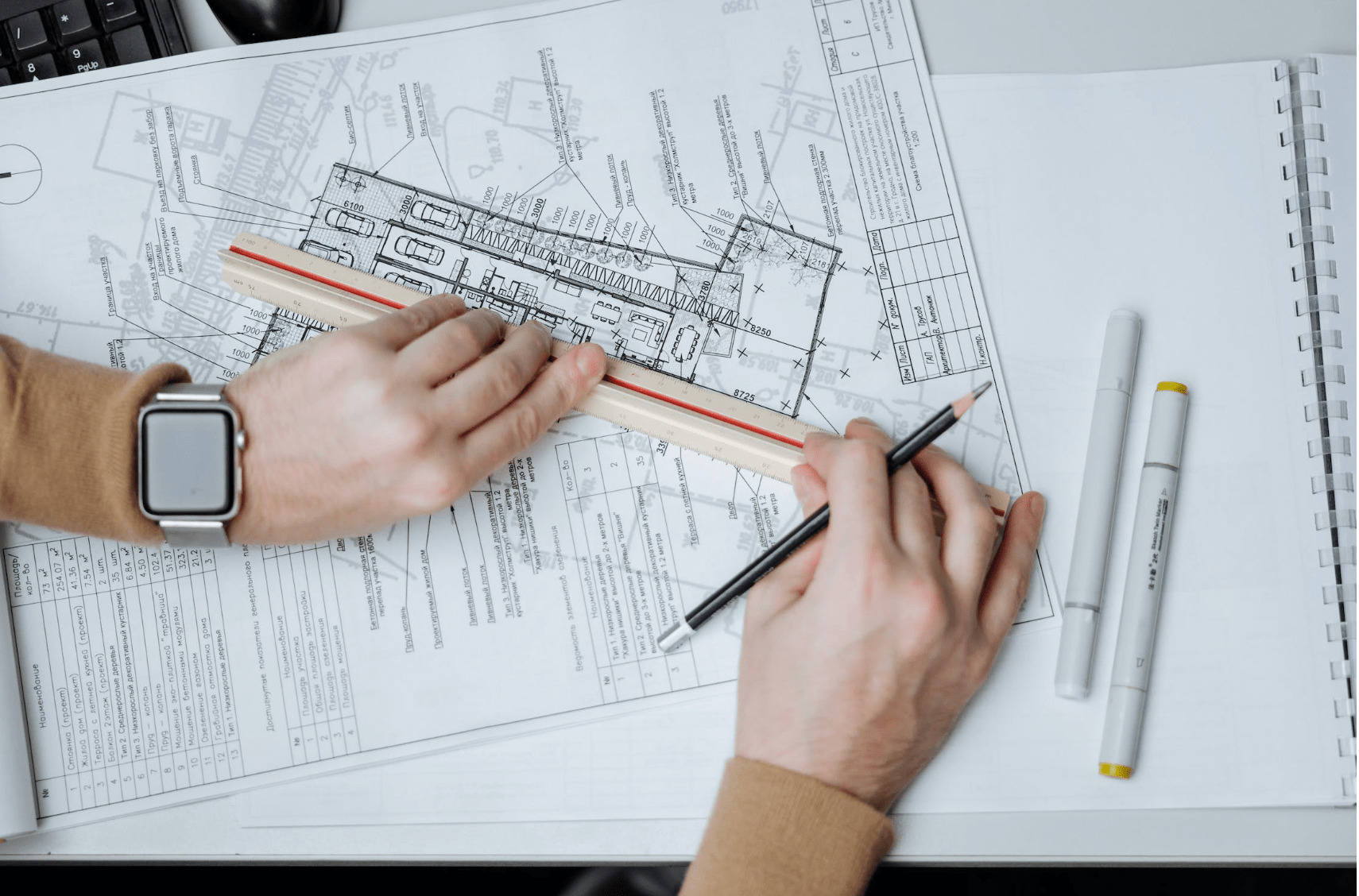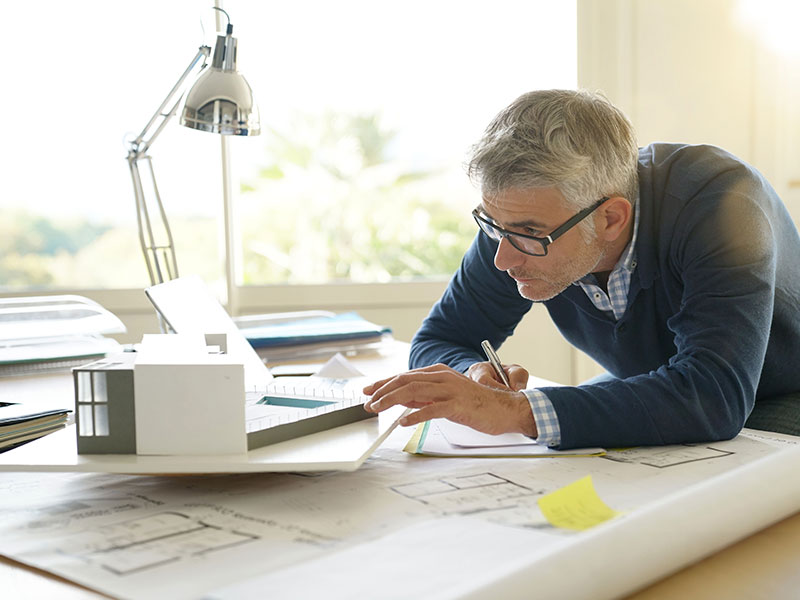Architect Recommended Software for 3D Modeling
Architect Recommended Software for 3D Modeling
Blog Article
Recognizing the Diverse Occupation Paths Available for Aspiring Architect
As a hopeful Architect, you have a world of career paths awaiting you. Each course supplies special obstacles and chances to apply your imagination and technical know-how. Whether you're drawn to conventional style or the subtleties of sustainable layout, there's a particular niche that lines up with your interests. Recognizing these diverse options can form your specialist journey, yet which direction will you select to explore first?
Typical Design: Creating Structures and buildings
Conventional style concentrates on creating buildings and structures that mix capability with visual appeal. As you explore this field, you'll value the complex equilibrium in between type and objective. You'll discover to draw motivation from historical styles, including aspects like symmetry, products, and craftsmanship. Your styles can show social heritage, showcasing regional traditions while fulfilling contemporary demands.
You'll develop skills in composing, model-making, and website evaluation, enabling you to imagine and communicate your ideas successfully. Engaging with customers, you'll need to recognize their vision and convert it right into possible layouts.
In addition, constructing codes and sustainability methods are important in your work, guaranteeing your frameworks are secure and eco-friendly. As you expand in your profession, you'll discover opportunities in domestic, industrial, and even reconstruction projects, each offering special challenges. Welcoming typical architecture leads the way for a fulfilling job that admires the past while forming the future.
Urban Planning: Forming Neighborhoods and Public Spaces
As an ambitious Architect, you can play a necessary duty as an urban planner, transforming just how communities work and communicate. By using community interaction methods, you'll guarantee that locals have a voice fit their setting. And also, integrating sustainable layout principles will aid produce rooms that not only satisfy today's requirements yet also secure the future.
Role of Urban Planners
While numerous could think of designers as the single enthusiasts behind buildings, metropolitan coordinators play an essential duty in shaping the more comprehensive landscape of areas and public rooms. They evaluate land use, zoning legislations, and area needs to create sustainable environments that enhance lifestyle. By working together with various stakeholders, you'll assist create parks, transportation systems, and suburbs that advertise social interaction and ease of access. Urban planners likewise focus on ecological factors to consider, making sure that advancements integrate environment-friendly areas and support biodiversity. Your experience in spatial layout and neighborhood dynamics allows you to envision future development while maintaining cultural heritage. In this crucial role, you'll directly affect just how people experience their surroundings, making every task a chance for favorable modification.
Community Interaction Strategies
Effective community interaction methods are essential for urban planners to guarantee that the voices of citizens are heard and valued in the preparation procedure. To cultivate purposeful discussion, you should focus on open discussion forums and workshops where neighborhood participants can share their concepts and concerns. By actively including and listening comments, you'll produce rooms that reflect the area's demands, inevitably leading to even more sustainable and successful city atmospheres.
Sustainable Design Concepts
When designing metropolitan rooms, including sustainable layout principles is important for creating environments that flourish both ecologically and socially. Think about incorporating eco-friendly areas, like yards and parks, to improve biodiversity and enhance air quality.
Creating with water conservation in mind is additionally essential-- think of rainfall yards and permeable surface areas to take care of stormwater. Including area participants during the planning procedure warranties that the rooms you produce fulfill their demands and urge social communication. By embracing these principles, you'll add to dynamic, lasting city landscapes that benefit everyone.

Landscape Architecture: Creating Lasting Outside Environments
As you discover landscape design, you'll discover essential layout principles that develop functional and attractive outside spaces. Lasting methods play an important function in guaranteeing these settings flourish while minimizing ecological impact. And also, you'll find a variety of job chances that allow you to make a genuine difference in exactly how individuals communicate with nature.
Layout Principles in Landscape
Comprehending style principles in landscape design is necessary for developing lasting outside atmospheres that balance with nature. You'll require to consider aspects like equilibrium, scale, and proportion to ensure your styles feel cohesive and welcoming. Furthermore, pay interest to seasonal modifications, developing with materials that enhance the environments year-round.
Sustainable Practices Summary
Sustainable practices in landscape style not only concentrate on aesthetic appeals yet also prioritize eco-friendly wellness and resource conservation. By incorporating indigenous plants, you enhance biodiversity and reduce the demand for chemical fertilizers and pesticides. Applying effective irrigation systems aids save water and reduces runoff, shielding close-by ecosystems. You can make areas that promote dirt health and wellness, such as exercising and using natural materials permaculture concepts. Furthermore, incorporating environment-friendly facilities, like rain yards and porous sidewalks, help in stormwater management and reduces metropolitan warmth. You contribute to a healthier earth and offer rooms that foster neighborhood connection when you produce exterior environments with sustainability in mind. Eventually, these methods assure your designs benefit both individuals and the setting for many years ahead.
Career Opportunities Exploration
With a strong foundation in sustainable methods, landscape design supplies a selection of job paths that allow you to make a significant influence on the atmosphere. You might function as a landscape designer, producing visually pleasing and practical outside areas, or focus on environmental repair, assisting to restore damaged communities. Urban coordinators typically work together with landscape designers to produce green spaces in urban setups, boosting city livability. If you're passionate about education, consider coming to be a landscape style teacher, inspiring future generations. Additionally, you might deal with nonprofits concentrated on environmental sustainability or participate in study to introduce new practices. Each course not only shapes attractive settings however also cultivates a healthier planet for future generations.
Lasting Style: Concentrating on Eco-Friendly Practices
As you explore your job in architecture, welcoming environment-friendly practices can set you apart in an affordable field. Sustainable layout concentrates on developing buildings that reduce ecological impact while improving owner well-being. By including renewable materials, energy-efficient systems, and lasting structure techniques, you'll contribute to a greener future.
Beginning by gaining understanding of environment-friendly certifications like LEED or BREEAM, which can boost your qualifications. Consider exactly how all-natural light, air flow, and thermal efficiency can optimize style. Team up with designers and environmental specialists to introduce options that lower waste and conserve resources.
Don't fail to remember the value of area participation-- engaging local stakeholders can inspire styles that balance with the atmosphere. As customers significantly prioritize sustainability, your knowledge in environment-friendly techniques will certainly not just bring in tasks yet additionally accomplish your interest for liable style. Welcome this crucial aspect of the profession, and watch your career flourish.
Historical Conservation: Shielding and Recovering Social Heritage
While you begin on your architectural journey, take into consideration the necessary role of historic conservation in keeping our social heritage. This field concentrates on the security and repair of considerable buildings, websites, and frameworks that tell the stories of our past. By involving in historical preservation, you'll help safeguard the building tradition that shapes area identification.
As a historic conservation Architect, you'll assess historical significance and analyze the condition of frameworks. You'll work very closely with guardians and historians to ensure authentic repair techniques are used. This career course allows you to mix creativity with research study, allowing you to develop solutions that appreciate initial materials and workmanship.
Your job not only adds to sustainability by reusing existing buildings yet also promotes a feeling of pride within neighborhoods. Embracing this path will certainly help you end up being a this website guardian of background, maintaining the tales and appearances that enhance our lives.
Inside Style: Enhancing Indoor Spaces
Historic preservation and indoor style both share a commitment to improving the constructed environment, however they concentrate on various aspects. While historic preservation stresses keeping a structure's historic and social worth, interior architecture nos in on maximizing interior rooms for performance and aesthetics.
As a hopeful Architect, you'll find that interior design permits you to mix creative thinking with technical skills. You'll develop areas that not just look great yet additionally advertise convenience and efficiency. This field involves understanding how light, color, and materials communicate within a space, impacting mood and functionality.
You'll work on different jobs, from household homes to business workplaces, making certain that each setting fulfills the demands of its owners. By focusing on individual experience, you can change interiors into inspiring and functional areas, making a considerable influence on exactly how people interact with their surroundings. Welcome the chance to improve indoor environments and form the method people function and live.
Industrial Style: Merging Functionality With Visual Appeals
Commercial layout plays a crucial duty in producing products that effortlessly blend looks with functionality, making sure that what you utilize everyday is not only aesthetically enticing however also sensible. As a hopeful Architect, you can engage on your own in this area, focusing on making whatever from furnishings to customer electronics. Your job involves comprehending customer requirements, products, and producing procedures, enabling you to create ingenious solutions that improve everyday experiences.
In industrial design, you'll frequently work together with online marketers, engineers, and manufacturers, making sure that your styles are not only stunning yet also possible. This career path provides a dynamic environment where creative thinking fulfills functionality, making it a satisfying option for architects interested in forming the items of tomorrow.
Frequently Asked Questions
What Educational Certifications Do I Required to Become an Architect?
To come to be a additional resources designer, you'll need a specialist degree in architecture, commonly a Bachelor's or Master's. Furthermore, you'll have to finish an internship and pass the Architect Enrollment Examination to practice legitimately.
Are There Certification Needs for Different Building Occupation Paths?
Yes, there're certification demands for various building paths. Architect. that site You'll require to pass exams, full internships, and occasionally go after specialized training, depending on your selected emphasis, like landscape design, city design, or historical preservation
What Software Program Skills Are Crucial for Architects Today?

Just How Can I Gain Practical Experience While Examining Architecture?
You can get useful experience by interning at building firms, taking part in layout competitions, offering for community tasks, or working together with schoolmates on real-world projects. These chances improve your abilities and develop valuable connections in the sector.
What Task Opportunities Exist Outdoors Conventional Style Firms?
You can explore different work chances outside typical architecture companies, like city planning, interior decoration, landscape style, building administration, realty growth, and even functions in sustainability consulting. Each deals unique obstacles and incentives.
Whether you're drawn to typical architecture or the nuances of lasting design, there's a specific niche that straightens with your interests.When creating city spaces, incorporating sustainable style concepts is crucial for producing atmospheres that grow both environmentally and socially.As you explore landscape architecture, you'll find necessary layout concepts that create gorgeous and practical exterior rooms.Understanding design principles in landscape architecture is important for producing sustainable outside atmospheres that balance with nature.In industrial style, you'll typically work together with producers, engineers, and marketing professionals, guaranteeing that your designs are not only gorgeous but additionally practical.
Report this page